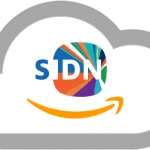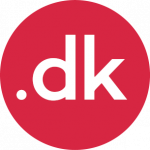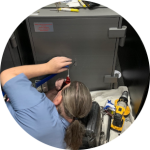Unrest surrounding the migration of .nl registration platform to AWS
The recent announcement by SIDN, the registry of .nl domain names, to migrate their registration platform to Amazon Web Services (AWS), has caused significant unrest within the Dutch internet community. This decision marks a significant shift from using in-house hardware to engaging a US cloud provider for essential digital infrastructure. This has not only led […]
Read more >Foreigners might loose their .dk domain name
Until recently, the Danish registry used to only verify contact information for registrants with an address in Denmark. In theory foreigners could also be verified, but this hardly ever happened. Any Danish registrant wanting to by-pass the verification, just needed to select a different country when registering their domain name. While that old way of […]
Read more >How we set-up our own Mastodon server
As we reported earlier, the takeover by Elon Musk of Twitter clearly was the straw that broke the camel’s back and eventually caused an exodus of twitter-users towards Mastodon. Mastodon is very much different from how Twitter works. Contrary to having one centralized system to control everything, Mastodon works via many independent nodes that magically […]
Read more >.giving to launch creatively
The registry behind .org, .ong and .ngo is getting ready to also launch the .giving domain. Just as their other TLD’s, the .giving extension is targetting the “do good” community. Both non-profit organisations doing a fund-raising and for-profit organisations who want to highlight the work they do in their community can register a .giving domain […]
Read more >Whole .cd zone down due to expired .net domain name (again)
The complete .cd zone (country code for the Democratic Republic of the Congo) is off-line since at least yesterday, because the .cd-registry forgot to renew the .net domain name under which all nameservers for .cd are hosted. The .cd-registry uses 3 nameservers which seem to be correctly located in independent locations. But all are subdomains […]
Read more >Some very interesting short domain names will be auctioned off
We recently reported that Luxembourg registry would be releasing 1 and 2 letter .lu domain names. The Tchad registry is planning to do the same for .td. They however won’t be cheap. Bidding for 1-letter .td domain names starts at € 10.000 and for two letter .td domain names the reserve price is set at […]
Read more >DigitalForYouth already sent over 11.000 refurbished laptops to schools
DNS Belgium (the registry behind .be, .vlaanderen and .brussels) had been working on their new “good cause” for a while: DigitalForYouth would finally launch in 2020. The goal is to give discarded laptops a second live by refurbishing them and giving them to Belgian schools and other institutions, who don’t have the financials means to […]
Read more >Let’s encrypt to revoke 3 million certificates… or not
Only about a month ago we reported about a big recall of certificates organised by Sectigo. They would be revoking about 6000 certificates, mostly owned by Dutch companies. They gave a 6-day notice. Let’s encrypt just responded with “hold my beer”, announcing to revoke 3 million certificates with only a 5-day notice.
Read more >Old-fashioned locksmith needed for root DNSSEC-signing
Every 3 months a special ceremony takes place in which new cryptographic “Zone Signing Keys” are being signed, which will be used the next quarter to secure the root DNS zone. These DNSSEC keys are the basis of every DNSSEC-protected domain name. A copy of the “Key Signing Key” required for this, is kept at […]
Read more >Sectigo starts major recall on EV certificates
Sectigo (formerly known as Comodo) is one of the leading providers for certificates. Such certificates are used to encrypt internet traffic going to websites and mailservers. Sectigo is now recalling almost 6000 certificates, all of which were issued to companies from The Netherlands. The recall action was announced Wednesday. Affected clients have less than one […]
Read more >| M | T | W | T | F | S | S |
|---|---|---|---|---|---|---|
| 1 | 2 | 3 | 4 | 5 | 6 | |
| 7 | 8 | 9 | 10 | 11 | 12 | 13 |
| 14 | 15 | 16 | 17 | 18 | 19 | 20 |
| 21 | 22 | 23 | 24 | 25 | 26 | 27 |
| 28 | 29 | 30 | 31 | |||









